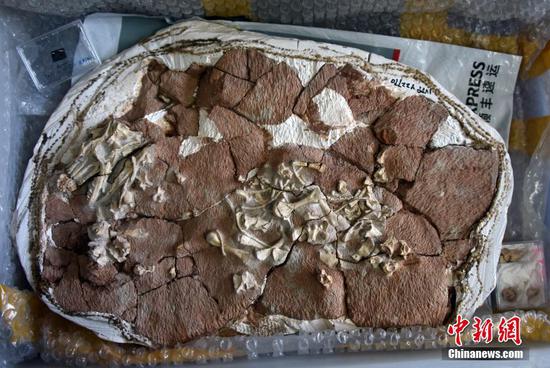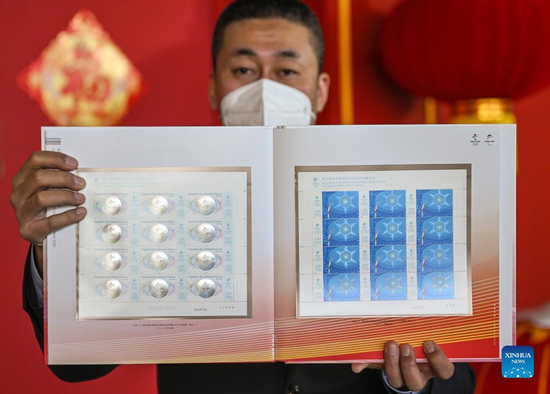The U.S. Centers for Disease Control and Prevention (CDC) has begun listing crucial information on how prevalent the coronavirus is in local wastewater to help determine whether levels of the virus are rising or falling in hundreds of communities nationwide.
The agency added the wastewater data to its COVID-19 tracker on Feb 4. Updated daily, the color-coded tool will show whether the level of virus in wastewater has increased or decreased within the past 15 days. The data is part of the CDC's National Wastewater Surveillance System, established in September 2020.
More than 400 testing sites in 212 communities around the country are conducting wastewater surveillance. That will double to more than 800 testing sites in the next four weeks, the CDC said on Tuesday.
Additionally, the CDC is aiding 37 states, four cities and two territories in developing wastewater-surveillance systems.
Wastewater data provides important information about the spread of the coronavirus because those who are infected shed the virus in their feces.
Dr Rochelle Walensky, CDC director, said during a White House press briefing on Wednesday: "As people with COVID-19 shed the virus, testing in wastewater or our sewage systems can help us monitor COVID-19 in communities and provide an early warning of increased COVID-19 cases to help communities prepare.
"This is a powerful tool that when paired with traditional public health surveillance can help us identify where the disease is spreading and how best to distribute resources."
Some established wastewater surveillance sites in Idaho, Louisiana, Mississippi and Montana are not yet reporting data.
But Dr Amy Kirby, head of the program for the National Wastewater Surveillance System told a news conference on Feb 4 that around 34,000 samples already had been collected from wastewater, representing approximately 53 million Americans.
While wastewater surveillance is helpful, it has its limitations.
It can be difficult in communities with "minimal or no sewer infrastructure and in communities with transient populations, such as areas with high tourism", Dr Kirby said. And it cannot be used to determine whether a community is free from infections.
Dr Kirby added: "Estimates suggest between 40 and 80 percent of people with COVID-19 shed viral RNA in their feces. These data are uniquely powerful because they capture the presence of infections from people with and without symptoms, and they're not affected by access to health care or availability of clinical testing."
However, as a person's coronavirus infection wanes, they shed less virus in their feces, making it less detectable.
In several African countries, the technique of examining wastewater has been used for decades to track polio.
In the U.S., a utility operator called an auto sampler will collect the wastewater samples for the CDC. The operator dips a bottle into the wastewater flow to get a sample, which is later shipped to a laboratory for further examination for viruses.
They will then extract the genetic material from the viruses and measure how much of that RNA is present in the sample, then send it to the CDC.
In New York, wastewater-data collection correlates with the city's coronavirus test results, Michael Lanza, a spokesman for New York City's Department of Health and Mental Hygiene confirmed.
Biotech companies and scientists monitored wastewater for clues in the rise and fall of the highly transmissible Omicron variant of the coronavirus to gauge how long cases would peak.
Officials in several U.S. communities are using data from wastewater surveillance to allocate additional resources to neighborhoods where the virus is increasing or to adapt treatment depending on results.
In Missouri, doctors at Hannibal Regional Hospital were able to switch treatments after local wastewater revealed that Omicron was responsible for most of the area's infections.
In Massachusetts, Boston Children's Hospital halted nonemergency procedures until wastewater surveillance showed that the peak of infections from Omicron had passed.
Officials in Houston have been monitoring sewage in Texas since 2020 at 39 wastewater-treatment plants, prisons and nursing homes. They measure the viral load across the city every Tuesday and adjust their responses based on results.
Last January, scientists who were examining New York city's wastewater detected samples that showed a unique mutation that had not yet been declared in humans, a sign it could be a new variant, The New York Times reported.
The researchers examined wastewater from 14 treatment plants in the city since June 2020. They still don't know what the variant is.
Researchers at the University of California at Berkeley also found a similar sequence to the one in New York in a local sewershed.


















































 京公网安备 11010202009201号
京公网安备 11010202009201号